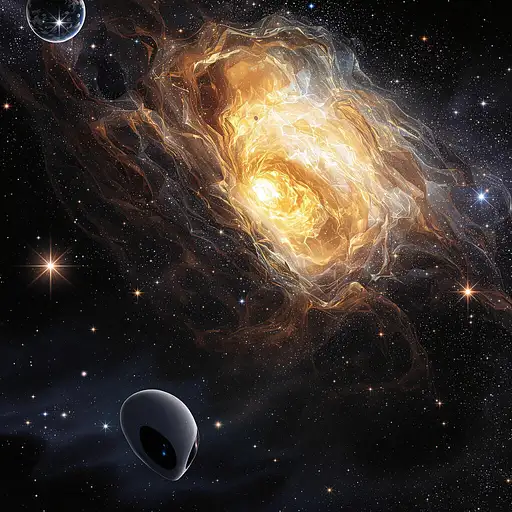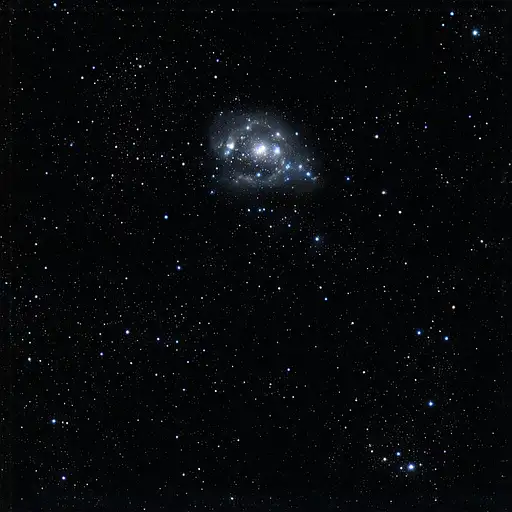
7 months ago
Grey aliens are typically portrayed as being short, slender, and frail in comparison to humans, often standing at around 3.5 to 4.5 feet (1–1.4 meters) tall. Their bodies are thin, and their limbs are long and spindly, giving them an almost insect-like or humanoid appearance. Their bone structure is likely lightweight and flexible, evolved for survival in the gravity of their home world—or to travel in spacecraft where physical bulk would be a hindrance. Their skin is usually a soft grey color, with subtle undertones that might range from silvery to almost white, depending on the lighting or environment. The texture of the skin is smooth, almost slick, and there are no visible pores or hair follicles, making them appear entirely alien. The surface may have a faint luminescence, almost as if the skin is slightly translucent or illuminated by internal bioluminescence, giving them an eerie glow in certain conditions. Head and Face One of the most striking features of the Grey alien is its oversized head. It is large in proportion to the body, often described as being disproportionately so. The head is typically bulbous and rounded, resembling an elongated, smooth egg shape. The face is featureless in many ways, lacking a nose, ears, or even a visible mouth. There is a slight ridge where the nose would be, but it is flat and non-functional as a human nose would be. The most prominent feature is the large, almond-shaped eyes. These eyes can take up nearly half the face, and they are often depicted as jet-black or dark grey, without visible pupils or sclera. The eyes may appear glossy, like pools of blackness, reflecting light and giving an impression of depth, almost as if they are absorbing the surrounding universe. They are often described as being completely emotionless, conveying an almost unsettling stillness. Some versions of Grey aliens are said to have the ability to communicate telepathically, and their eyes may serve as a focus for this communication, acting as a conduit for mental connection. Body and Limbs The body of a Grey alien is unnervingly thin, with a torso that is somewhat elongated. Its ribcage may be slightly visible under the smooth, skin-tight surface, although it’s likely flexible and adapted for movement in low-gravity or vacuum environments. The arms and legs are disproportionately long, and the hands and feet have three long fingers and toes, each one with delicate, slender joints. There is no visible hair on the body or head, adding to their alien, unsettling appearance. Their musculature is minimal, with only the necessary strength for locomotion and basic functions. This suggests that their physiology does not require great physical exertion, and their technology or evolutionary adaptation allows them to thrive in environments where humans would struggle to survive. Genitalia (Speculative Description) The reproductive organs of Grey aliens, as described in some alien lore, are minimalistic and vastly different from human anatomy. While not universally depicted in detail, various accounts describe them as being fundamentally different from human biological systems. The Grey alien does possess both male and female reproductive organs, often described as internal and capable of self-reproduction in certain accounts. However, in cases where their external anatomy is described in more detail, the genital area is generally subtle, with very little visible outward differentiation compared to humans. The structure, if described, tends to be smooth and streamlined, with no overtly distinguishing features or sexual characteristics that would stand out unless closely examined. Specifically, the male genitalia of a Grey alien is often depicted as relatively simple, perhaps resembling a rudimentary organ that is not as outwardly pronounced as human genitalia. The penis is described as small, possibly slightly retractable or adapted for internal reproductive purposes. In some variations, the structure may not be as pronounced or even visible to the naked eye, fitting with the idea that Grey aliens evolved in a way where physical distinctions were not necessary for their survival. As for the testes or “balls,” if mentioned, they are usually described as being internal, rather than external like those of humans. This would align with their biology, suggesting that reproduction for the Grey alien does not require external mating or a highly visible reproductive system. This may reflect the creature’s focus on internal self-replication or highly controlled reproductive processes that do not rely on physical intimacy in the way human biology does. Additional Features and Abilities Beyond the physical appearance, Grey aliens are often described as possessing abilities that go beyond the purely biological. Their large, black eyes are frequently linked to telepathic capabilities, allowing them to communicate with other beings without the need for speech. Some versions of these aliens also possess an advanced understanding of technology, enabling them to travel vast distances across space and possibly even manipulate the fabric of reality in ways that seem impossible. Their lack of visible sexual characteristics and the emphasis on internal reproductive methods or telepathic bonding are frequently tied to the notion that they have transcended conventional biological limitations. They may not experience sexuality, reproduction, or even physical relationships in the same way that humans do, leading to the idea that their society is built around intellect, technology, and collective connection rather than physical or emotional interactions.



